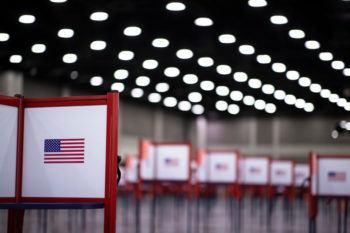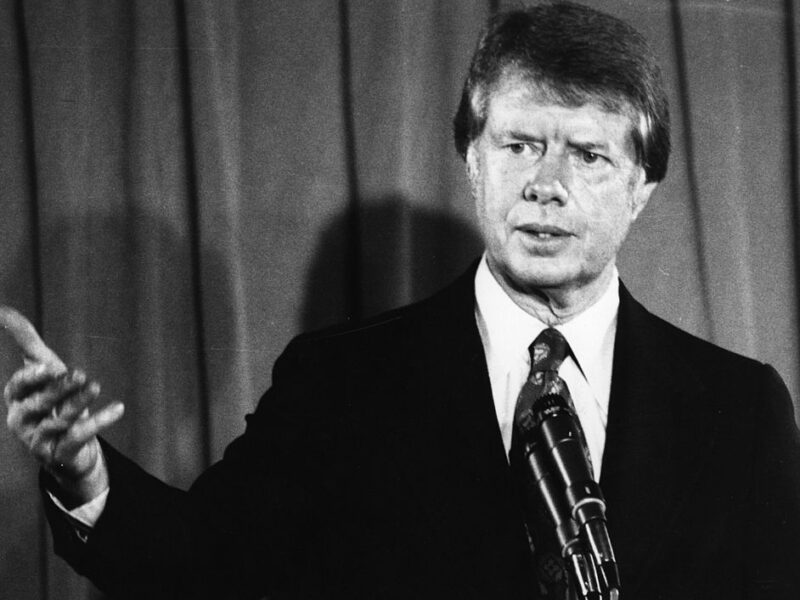Polls Have Value, Even When They Are Wrong

An ABC News/Washington Post poll in September 2023 generated outrage among Democrats. The headline on the story, “Trump edges out Biden 51-42 in head-to-head matchup: POLL,” appeared designed to attract clicks rather than accurately portray where the race was on that day – or where it was headed.
Below the headline, the news organizations’ analysis of the poll results was far more nuanced, capturing the challenges confronting President Joe Biden in his bid for reelection and acknowledging the poll results may be an outlier.
Pollsters, like me, are always interested in horse race numbers, which provide a simple comparison of where the candidates stand if voters had to cast their ballots on the day the poll was conducted. But we are much more interested in what is happening beneath the surface.
Let me explain how a pollster reads a poll.
Delving Deeper
Poll results are divided into a number of elements.
Cross tabulations provide comparisons across subgroups. They tell us how well candidates are faring with key voting constituencies, such as suburban women, racial and ethnic minorities, and the white working class.
Biden, for example, is faring poorly among nonwhite working-class voters, relative to previous Democratic presidential candidates and even his 2020 presidential campaign, raising concerns about his prospects for reelection.
Pollsters also like poll questions that gauge voters’ perceptions of a candidate’s leadership qualities, their likability and voters’ most pressing issues. These concerns help to explain who appears to be winning – or losing – the election. Here I have in mind questions like: Is the candidate perceived as a strong leader? Do voters believe the candidate cares about people like them? And even more simply, do voters like the candidate? Is this someone they would want to have a beer with?
Fair or not, the polls tell us that Biden’s age is a very real concern. Should he win reelection, Biden would be 82 at the time of his inauguration, surpassing a record he already holds as the oldest elected president. Should Donald Trump win election in 2024, he would be 78, edging Biden out by a few months as America’s oldest president at the time of his election.
Pollsters also pay attention to context, including indicators like unemployment and inflation rates that tend to drive an election regardless of which candidate appears to be advantaged or disadvantaged by the latest round of breaking news.
Polls reveal Biden’s campaign continues to struggle with low approval ratings and an inability to translate relatively strong economic indicators into rosier public evaluations of the economy.
Primaries Are Challenging
Even the best polls provide only a snapshot in time and are limited in their ability to predict the future. One lesson of polling: It is harder to poll in primary elections without partisan affiliation to guide voter choice. In other words, in a primary election the voter chooses from candidates who are in the same party. Recent history is replete with examples of candidates whose fortunes changed. Hillary Clinton, for example, was leading in September 2007, one year prior to the presidential election. She eventually lost the nomination.
Shifts in the political context, such as recent events in the Middle East, can alter the course of a campaign. In 2008, for example, Barack Obama and John McCain were in a dead heat prior to the collapse of Lehman Brothers and the subsequent financial meltdown leading to the Great Recession.
The Issues That Matter
Polls may do poorly at picking a winner, but they do better in helping pollsters, journalists and voters understand what issues matter and why they matter.
In 2016, by asking questions gauging immigration attitudes, the polls explained how nativist appeals separated Trump from the rest of the pack of Republicans seeking the GOP nomination and mobilized the party’s Republican base in the general election.
In the 2022 midterm elections, polling shed light on how the Supreme Court decision overturning the Roe v. Wade precedent that protected abortion rights fundamentally altered the political landscape and mobilized Democratic voters.
Polling And Context
Political polarization is perhaps the defining characteristic of the country today. It is magnified by partisan news media, which often provide disparate portrayals of the state of the nation.
In a polarized political environment, the floor on candidate support in a horse race poll is high and the ceiling is low. What does this mean? Neither candidate is likely to see their support drop much below 40% or rise above 50%.
This is especially true for Donald Trump. Even with four criminal indictments against him, his favorability remains at 40.3% as of October 2023, according to aggregate polls. His unfavorable numbers have similarly remained largely unchanged at 54.8%.
Biden lacks Trump’s seeming impenetrable connection to his base, so his floor is lower – and so is his ceiling.
Many of Biden’s potential supporters explicitly say they would like to see someone – anyone – else as the Democratic nominee. But in the absence of someone else, would they vote for Donald Trump, stay home or vote for a third-party candidate? The polls reveal that, as unhappy as these voters may be today, as November approaches, they are likely to hold their noses and cast a ballot to reelect Biden.
The Limits Of National Polls
Finally, while much of the polling data is national in scope, presidential elections are better described as a series of independent state elections – and national polls can reveal little about state campaigns. In 2016, national polls were generally accurate predictors of the two-party vote, but they did not help predict the outcomes in individual states or in the Electoral College.
As in 2016 and 2020, the 2024 presidential race will likely be decided by a small number of voters in a limited number of states. With a shift of fewer than 80,000 votes in Michigan, Pennsylvania and Wisconsin, Hillary Clinton would have won the presidency in 2016. In 2020, a shift of fewer than 45,000 votes in Georgia, Arizona and Wisconsin would have resulted in an Electoral College tie. A shift of just 80,000 votes in Georgia, Arizona, Wisconsin and Nevada and Donald Trump would have won reelection in 2020.
In narrowly decided races, polls have less predictive power. But at this point in the cycle, the polls do reveal there’s little reason to believe that 2024 will be anything other than a narrowly decided, and heavily disputed, election outcome.
The most likely presidential candidates in 2024, Biden and Trump, have nearly universal name recognition and sharply different images and positions on the issues. And yet, there is a disproportionate number of undecided and dissatisfied voters heading into the 2024 presidential campaign.
Polling cannot determine with certainty what these swing voters will end up deciding in November 2024, but by continually tracking their behaviors and attitudes, pollsters can better understand why one of these candidates will emerge as the winner of the 2024 presidential election and what these voters care about.
In a democracy, political polling has made, and continues to make, an invaluable contribution. Objecting to political contests being reduced to a horse race by a poll is valid. But polls, while limited in scope, can provide a nuanced picture of what a country, state or group thinks about both current events and candidates – and how that is changing.
That is valuable information.
This article by Kirby Goidel originally appeared on The Conversation.





